Siena, one of the oldest abbeys in Tuscany for sale
From vocation crisis to luxury hotels. This seems to be the end of many ecclesiastical structures that with the dwindling number of friars and monks to occupy them are then decided to give them up. Structures of enormous grandeur as much as the architectural beauty that designed them. It is news these days of a monastery in the province of Siena, theAbbey of St. Eugene, being put up for sale and the relocation of the last Daughters of Charity of St. Vincent de Paul, who own the property.
It may be the oldest monastery in Tuscany (we speak of 730 A.D.), located in the iconic Sienese hills, and given its size the nuns have turned to a firm specializing in luxury buying and selling, Lionard Luxury Real Estate. They are talking about a minimum of 10 million euros to buy the Benedictine Abbey including the garden, vineyard, olive grove, winery and being able to enjoy the landscape from the panoramic terrace. On being the oldest monastery in Tuscany, as the sales company claims, however, there is no certainty: it is a data that the real estate agency provides but lacking the act of consecration is one of the information to be verified. For some scholars at that time in Tuscany there must also have been already others such as the San Pietro Complex in Camaiore (Lucca) whose beginning of construction would date back to the 7th century. It is, however, a complex of very ancient origins.
The structure, just outside Siena, consists of an indoor area of 6,200 square meters (on three floors) and outdoor spaces of nearly 10 thousand square meters. The Abbey is built around two cloisters, one of which also has a well and displays elegant Renaissance architecture, characterized by round arches with sandstone columns topped by fine capitals. The second cloister offers a different perspective, with hexagonal brick pillars. The entire complex is made of mixed tuff and brick masonry. Inside, one can admire a small sacellum frescoed in the vault with medallions and grotesques, the work of a late 16th-century Sienese artist. Most of the rooms are vaulted and frescoed.
The Benedictine abbey, according to Lionard, has a long history rooted in the year 730, when the Lombard Warnifredo, a castaldo regio stationed in Siena, founded it and endowed it with surrounding lands and estates. Originally given to the Cassinese Benedictines by Warnifredo in 731, the monastery was later united with the monks of Santo Spirito in Siena and those of San Salvatore all’Isola on October 29, 1446, by decree of Pope Eugene IV. Throughout its history, the monastery has suffered periods of conflict and destruction, such as when the troops of Charles of Anjou camped in the area in 1270 during the sacking of Siena, or when Marshal Pietro Strozzi erected fortifications there in 1553.
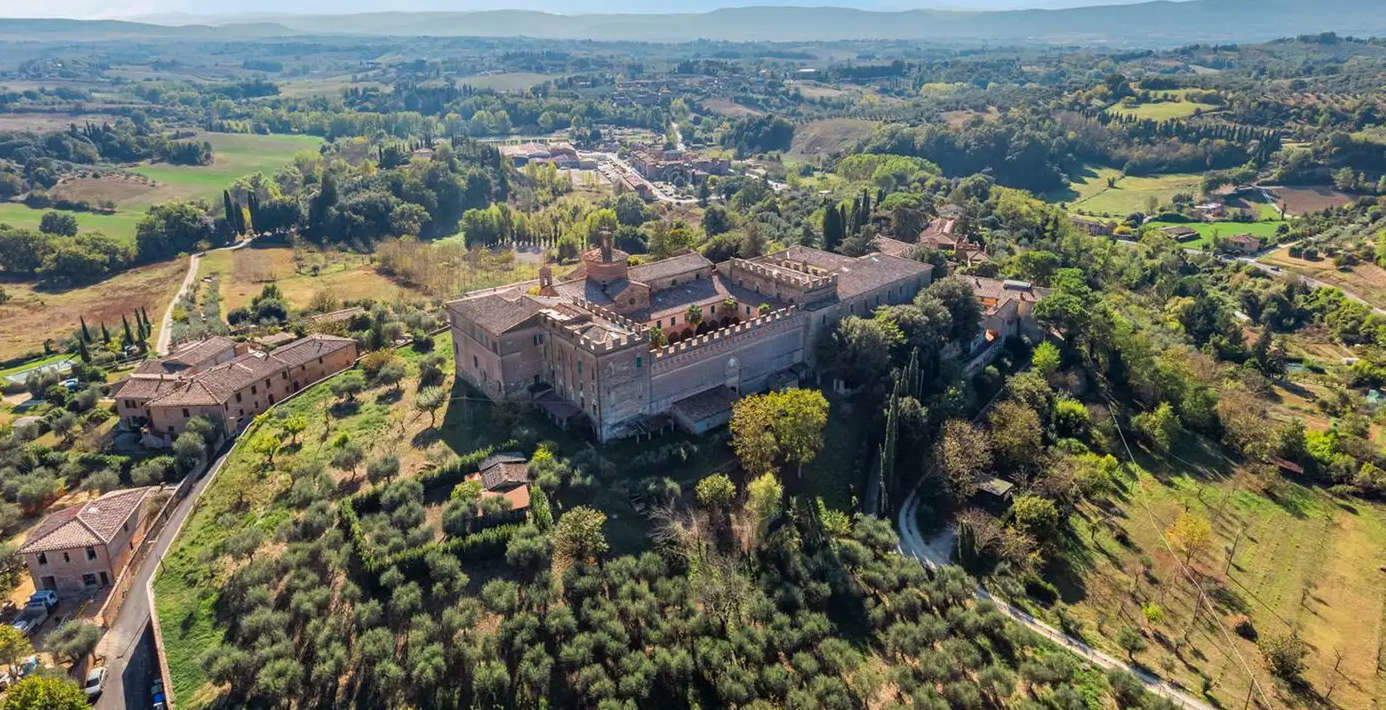
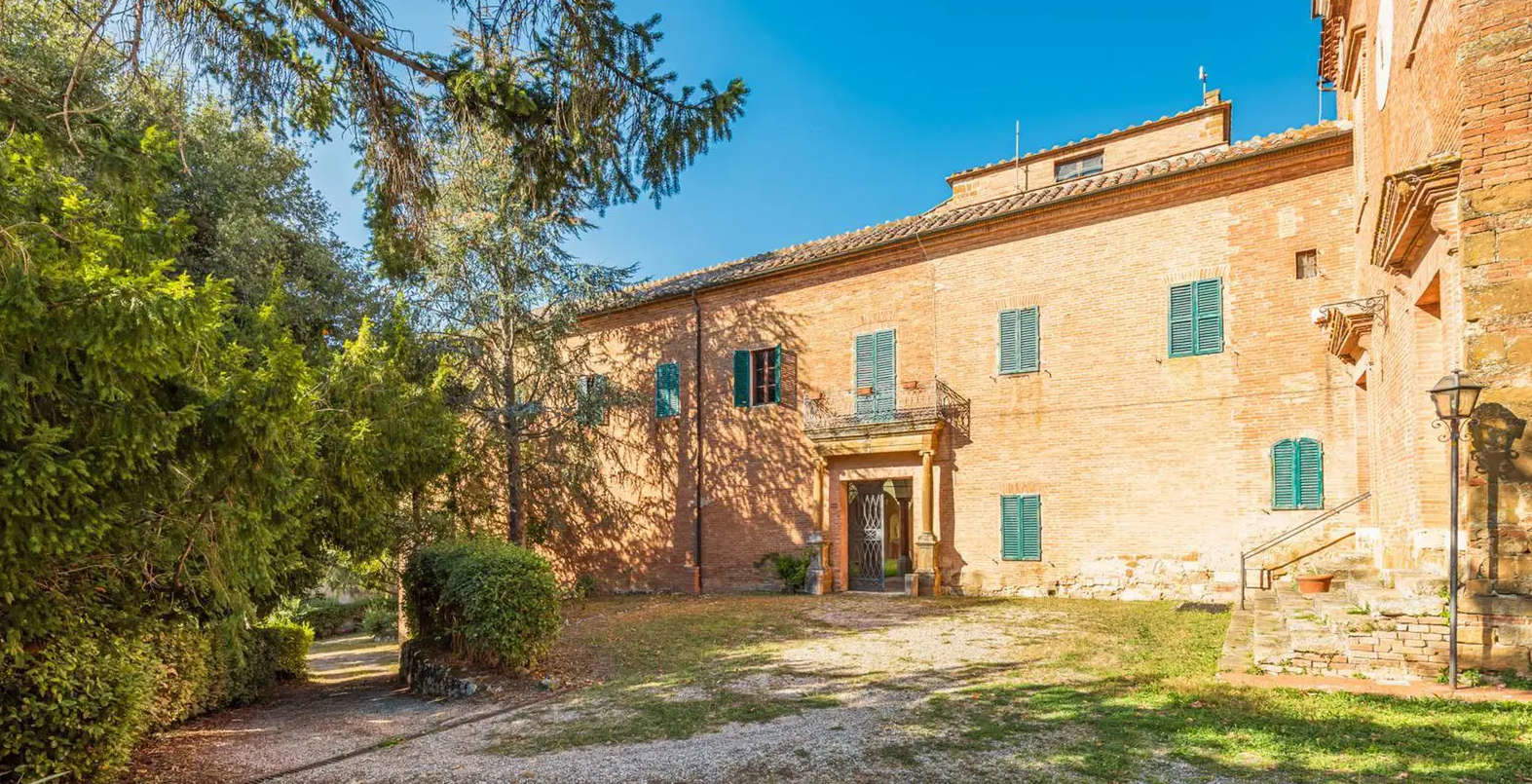
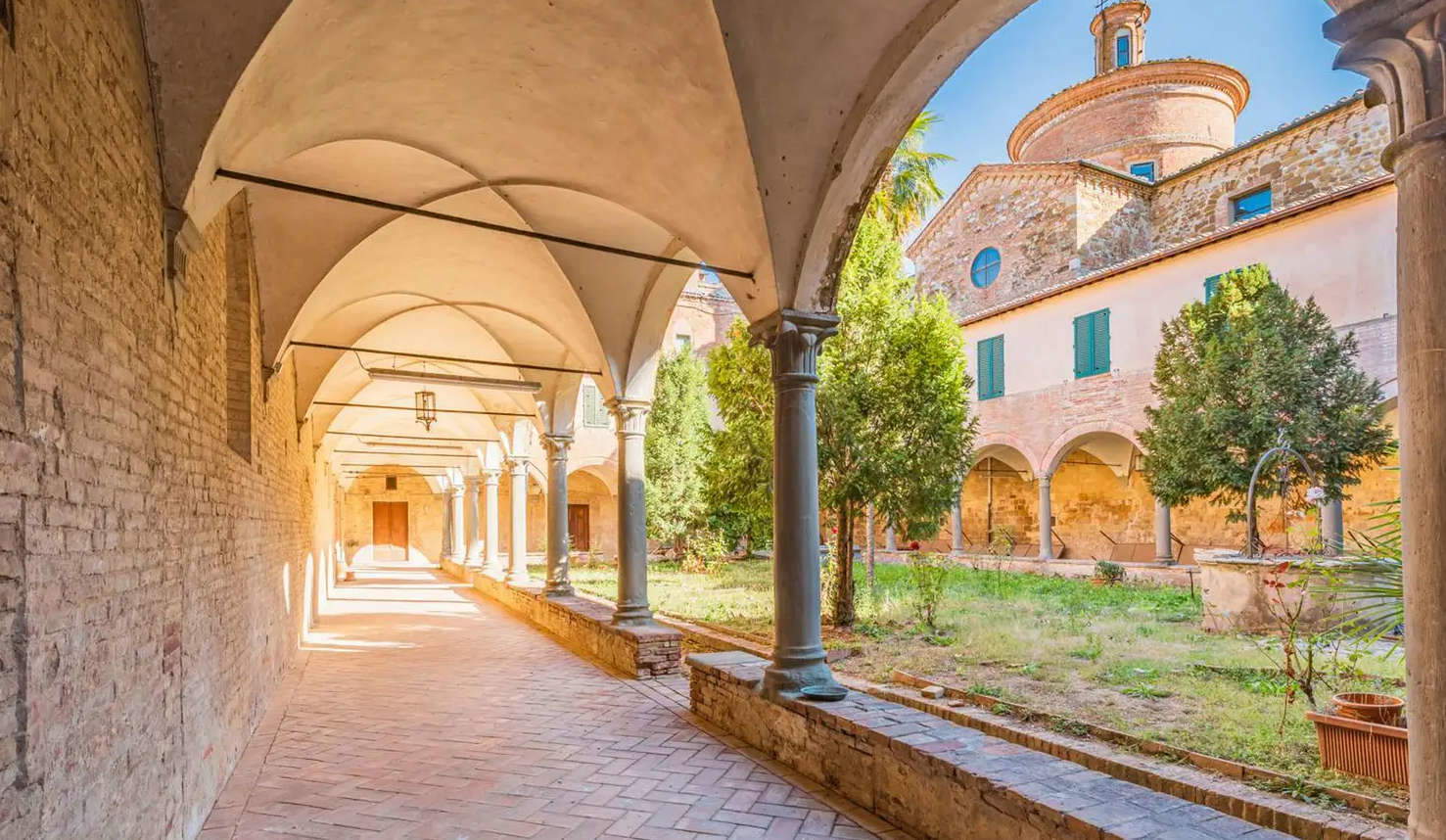
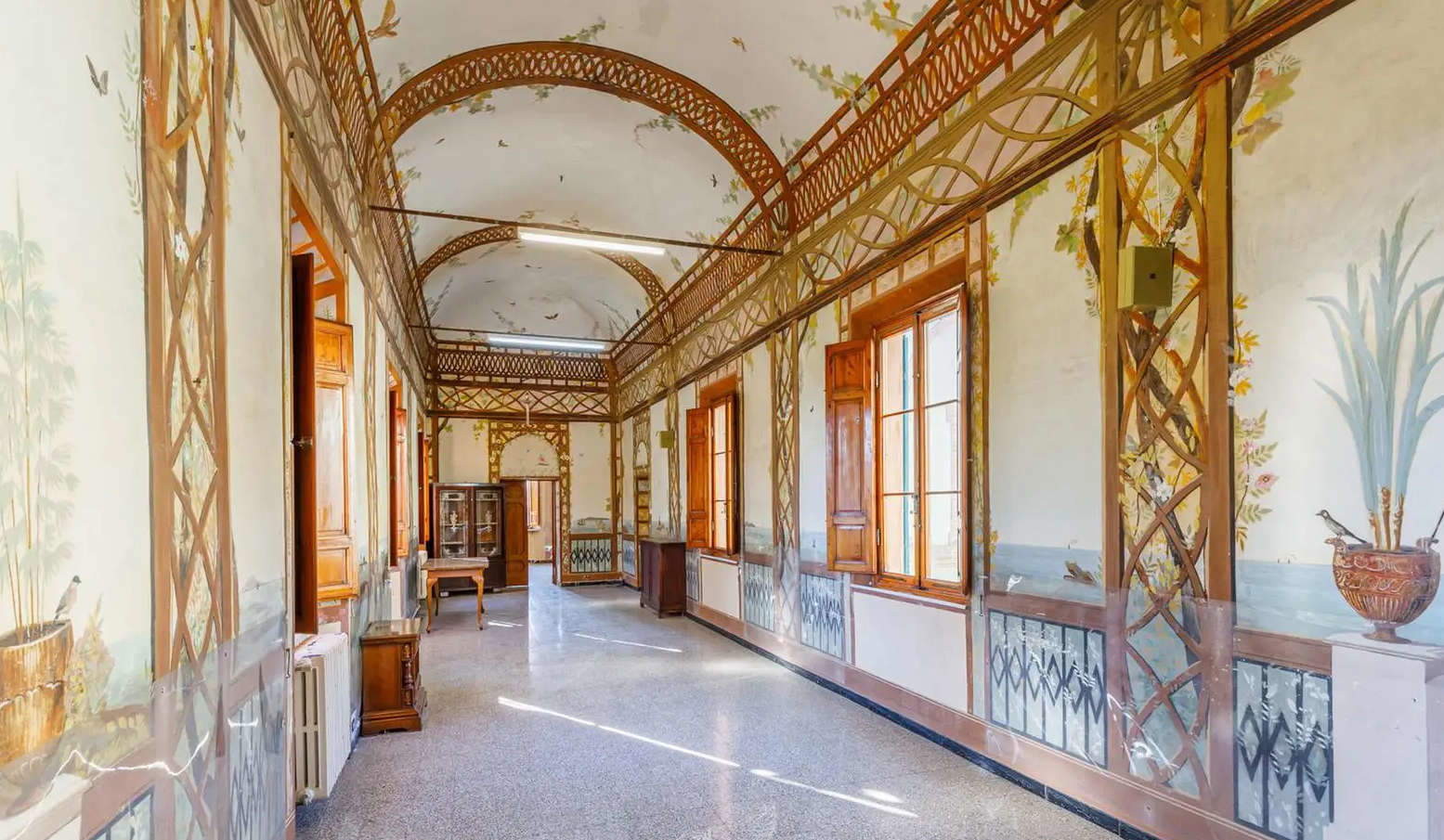
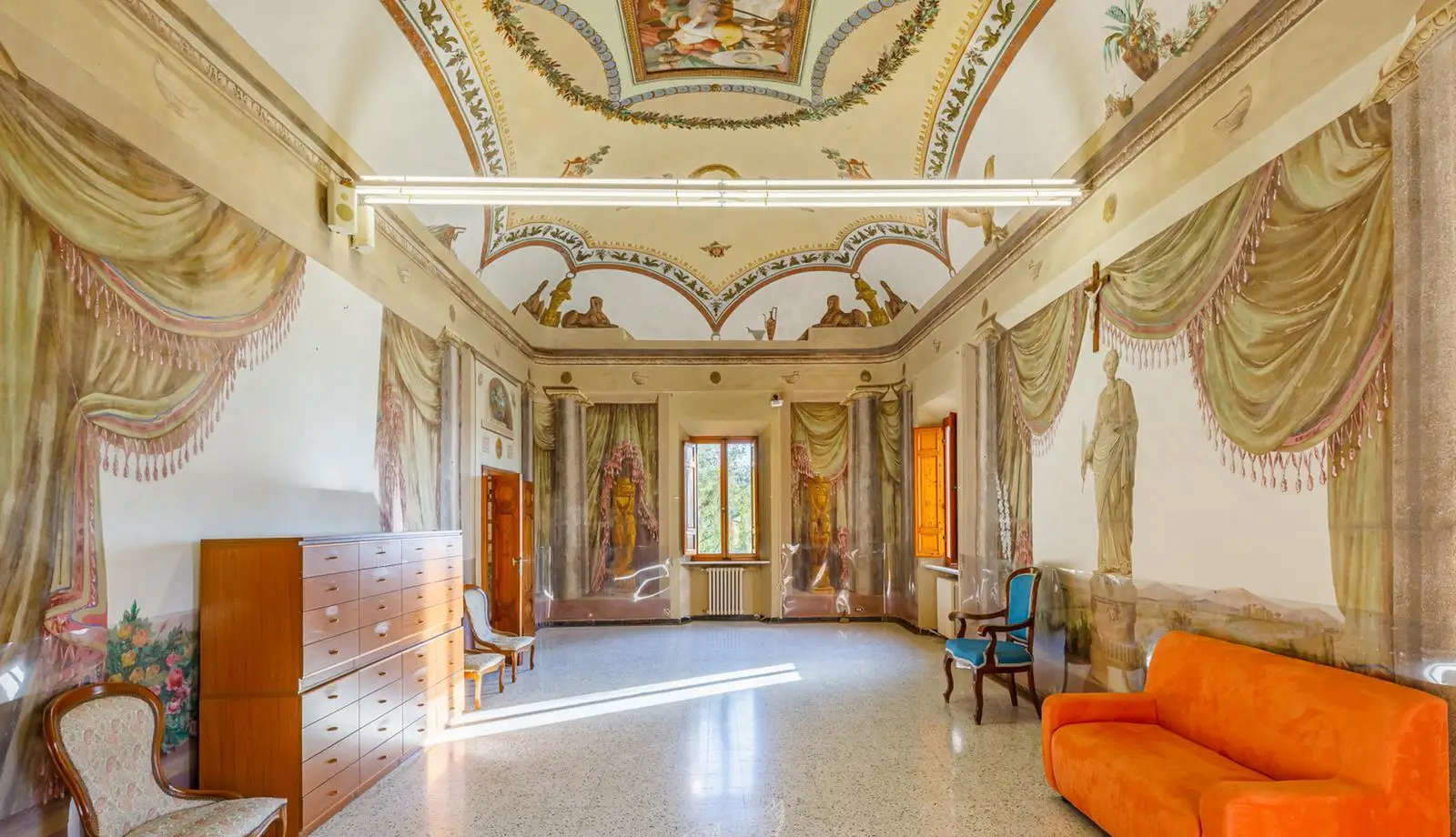
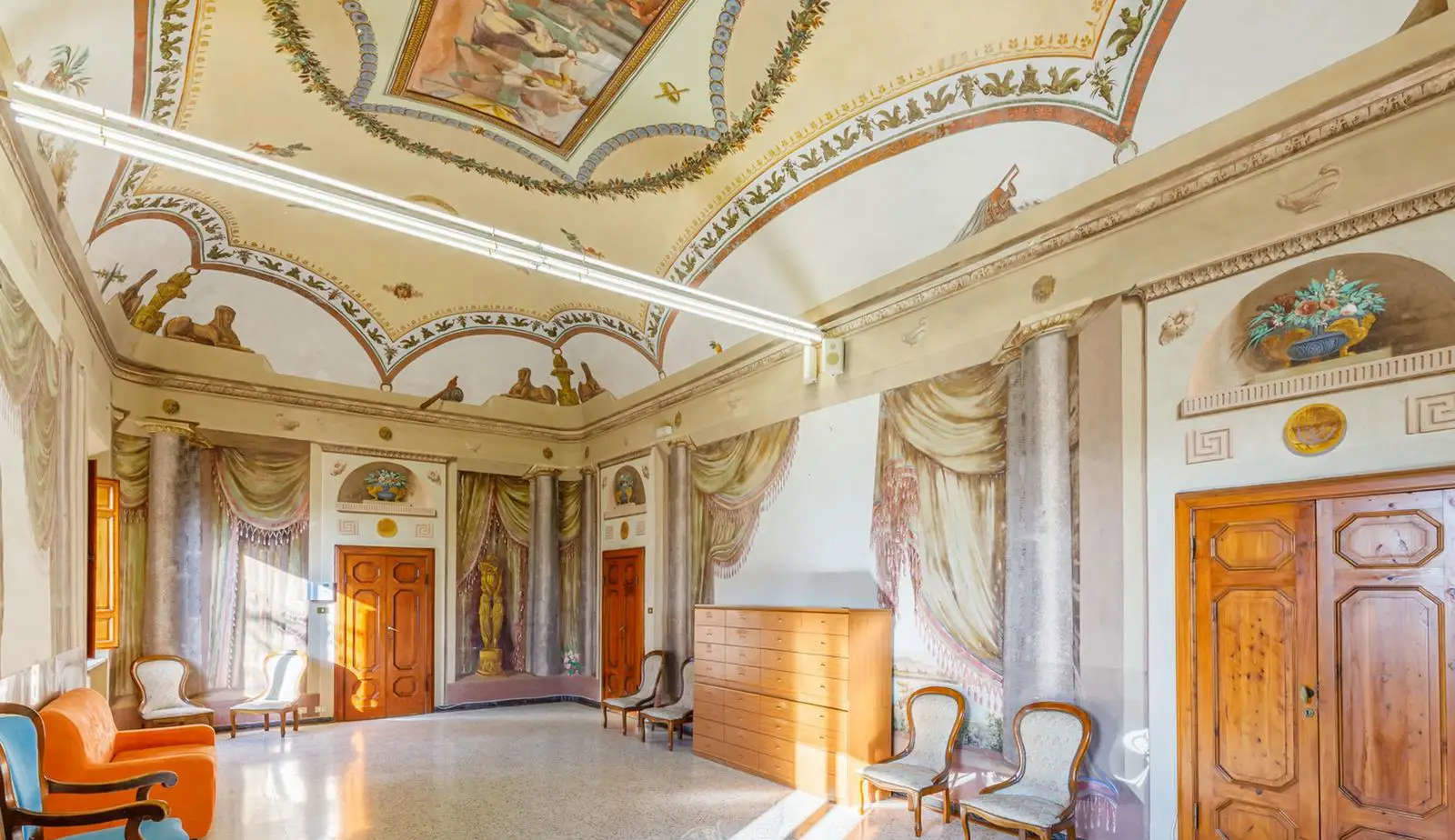
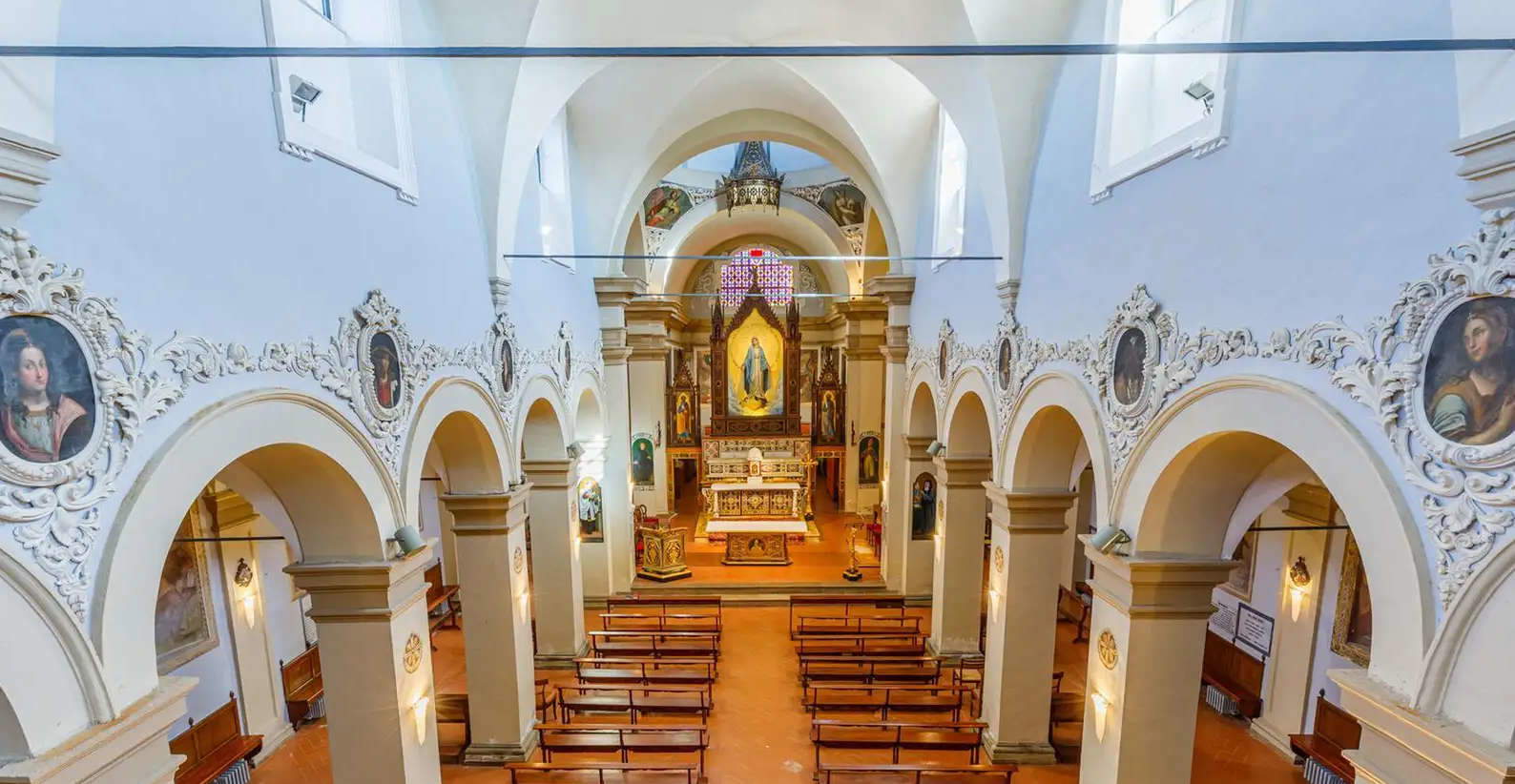
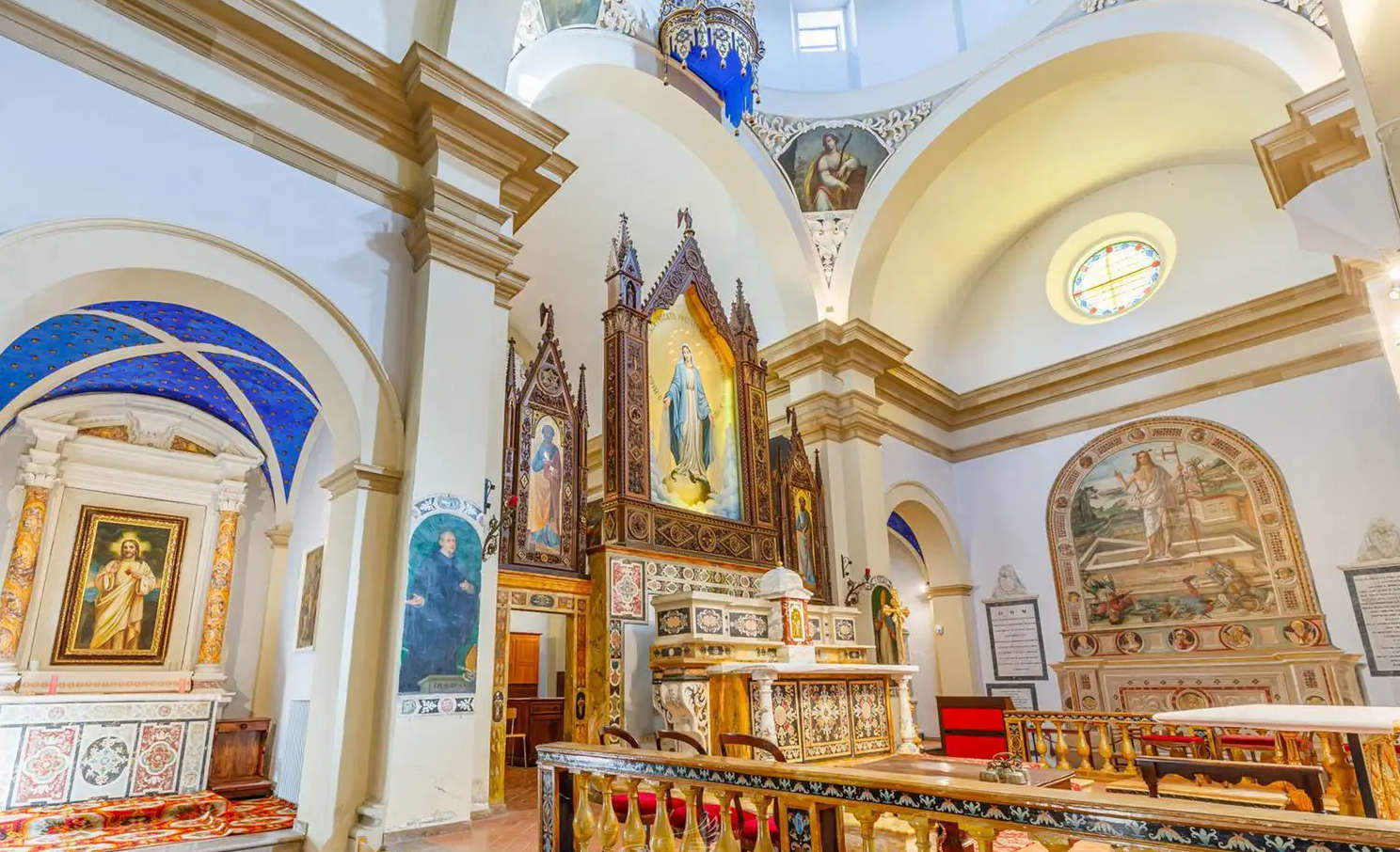
Until 1786, the monastery functioned as the seat of Benedictine monks, after which it was used as a summer residence and partly rented out. After the Napoleonic suppression, in 1812 the monastery passed to the Griccioli counts, who owned it until 1932. During their ownership, the complex was transformed and adapted to become their home. Some buildings were torn down to create a garden. Later, in 1932, the monastery became a nursing home run by the Vincentian Sisters, and today a foundation manages the premises for social and cultural purposes thanks to their concession.
The church, an integral part of the Benedictine monastery of St. Eugene founded in 731, has shared the history of the monastery and has undergone some changes over the years. The family of Count Griccioli contributed to the complete renovation of the monastery and church, including the demolition of the bell tower and the reconstruction of the brick facade in the Neo-Renaissance style. On the outside, the distinctive feature is the cylindrical tiburium that surrounds the dome. Inside, the church features three cross-vaulted naves, with the dome rising at the intersection with the transept, where two stucco altars are located. The church boasts rich furnishings, including a wooden choir and baptismal font.
The property is listed in the catalog of architectural and landscape cultural heritage of the Soprintendenza Archeologia Belle Arti e Paesaggio for the provinces of Siena, Grosseto and Arezzo. As long as they were able to manage the huge maintenance costs inside, until a few months ago, there were about 40 nuns, mostly postulants and then passing through for six months. Eventually they were transferred and the entire complex put up for sale. Hard to imagine that it will be functional again for charity work or spiritual welcome, its fate seems already sealed by the choice of the entity in charge of selling it, which has been managing large luxury real estate assets since 2008.
 |
| Siena, one of the oldest abbeys in Tuscany for sale |
Warning: the translation into English of the original Italian article was created using automatic tools. We undertake to review all articles, but we do not guarantee the total absence of inaccuracies in the translation due to the program. You can find the original by clicking on the ITA button. If you find any mistake,please contact us.





























